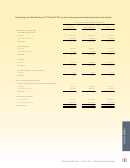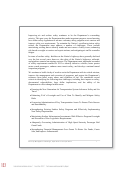Performance And Accountability Report - Fiscal Year 2013 - Federal Aviation Administration - U.s. Department Of Transportation Page 91
ADVERTISEMENT
 1
1  2
2  3
3  4
4  5
5  6
6  7
7  8
8  9
9  10
10  11
11  12
12  13
13  14
14  15
15  16
16  17
17  18
18  19
19  20
20  21
21  22
22  23
23  24
24  25
25  26
26  27
27  28
28  29
29  30
30  31
31  32
32  33
33  34
34  35
35  36
36  37
37  38
38  39
39  40
40  41
41  42
42  43
43  44
44  45
45  46
46  47
47  48
48  49
49  50
50  51
51  52
52  53
53  54
54  55
55  56
56  57
57  58
58  59
59  60
60  61
61  62
62  63
63  64
64  65
65  66
66  67
67  68
68  69
69  70
70  71
71  72
72  73
73  74
74  75
75  76
76  77
77  78
78  79
79  80
80  81
81  82
82  83
83  84
84  85
85  86
86  87
87  88
88  89
89  90
90  91
91  92
92  93
93  94
94  95
95  96
96  97
97  98
98  99
99  100
100  101
101  102
102  103
103  104
104  105
105  106
106  107
107  108
108  109
109  110
110  111
111  112
112  113
113  114
114  115
115  116
116  117
117  118
118  119
119  120
120  121
121  122
122  123
123  124
124  125
125  126
126  127
127  128
128  129
129  130
130  131
131  132
132  133
133  134
134  135
135  136
136  137
137  138
138  139
139  140
140  141
141  142
142  143
143  144
144  145
145  146
146  147
147  148
148  149
149  150
150 D. Revenues and Other Financing Sources
The FAA recognizes as an imputed financing source the amount
of accrued pension and post-retirement benefit expenses for
Congress enacts annual, multi-year, and no-year appropriations
current employees paid on the FAA’s behalf by the Office of
to be used, within statutory limits, for operating, capital and
Personnel Management (OPM), as well as amounts paid from
grant expenditures. Additional amounts are obtained from
the U.S. Treasury Judgment Fund in settlement of claims or court
service fees (e.g., landing, registry, and overflight fees), Aviation
assessments against the FAA.
Insurance Program premiums (see note 16), and through
reimbursements for products and services provided to domestic
E. Taxes
and foreign governmental entities.
The FAA, as a federal entity, is not subject to federal, state, or
The AATF is sustained by excise taxes that the IRS collects
local income taxes and, accordingly, does not record a provision
from airway system users. Excise taxes collected are initially
for income taxes in the accompanying financial statements.
deposited to the General Fund of the U.S. Treasury. The IRS does
not receive sufficient information at the time the excise taxes
F. Fund Balance with the U.S. Treasury
are collected to determine how they should be distributed to
specific funds from dedicated collections. Therefore, the U.S.
The U.S. Treasury processes cash receipts and disbursements.
Treasury makes initial semi-monthly distributions to funds from
Funds held at the Treasury are available to pay agency liabilities.
dedicated collections based on estimates prepared by its Office
The FAA does not maintain cash in commercial bank accounts
of Tax Analysis (OTA). These estimates are based on historical
or foreign currency balances. Foreign currency payments are
excise tax data applied to current excise tax receipts. The FAA’s
made either by Treasury or the U.S. Department of State and are
September 30, 2013, financial statements reflect excise taxes
reported by the FAA in the U.S. dollar equivalent.
certified (as actual collections) by IRS through June 30, 2013,
and excise taxes estimated by OTA for the period July 1 through
G. Investment in U.S. Government Securities
September 30, 2013, as specified by Statement of Federal
Financial Accounting Standards (SFFAS) Number 7, Accounting
Unexpended funds in the AATF and Aviation Insurance Revolving
for Revenue and Other Financing Sources. Actual excise tax
Fund (Aviation Insurance Program premiums) are invested in U.S.
collections data for the quarter ended September 30, 2013, will
Government securities at cost. A portion of the AATF investments
not be available from the IRS until February 2014. When actual
is liquidated semi-monthly in amounts needed to provide cash
amounts are certified by the IRS, generally three to four months
for the FAA appropriation accounts, to the extent authorized.
after the end of each quarter, adjustments are made to the AATF
Aviation Insurance Revolving Fund investments are usually held
to account for the difference. Historically, actual excise tax
to maturity, but may be liquidated to pay for an insurance claim
collections certified by the IRS for the fourth quarter of the fiscal
when necessary. Investments, redemptions, and reinvestments
year have not been materially different from the OTA’s estimate.
are held and managed under the direction of the FAA by the U.S.
Additional information on this subject is disclosed in Note 12.
Treasury.
The AATF also earns interest from investments in U.S.
H. Accounts Receivable
Government securities. Interest income on investments is
recognized as revenue on the accrual basis.
Accounts receivable consists of amounts owed to the FAA by
other federal agencies and the public. Amounts due from federal
Appropriations are recognized as a financing source when
agencies are considered fully collectible. Accounts receivable
expended. Revenues from services provided by the FAA
from the public include, for example, overflight fees, fines
associated with reimbursable agreements are recognized
and penalties, reimbursements from employees, and services
concurrently with the recognition of accrued expenditures for
performed for foreign governments. These amounts due from the
performing the services. Aviation Insurance Program premiums
public are presented net of an allowance for loss on uncollectible
are recognized as revenue on a straight-line basis over the period
accounts based on historical collection experience or an analysis
of coverage. Aviation overflight user fees are recognized as
of the individual receivables.
revenue in the period in which the flights take place.
89
|
|
Federal Aviation Administration
Fiscal Year 2013
Performance and Accountability Report
ADVERTISEMENT
0 votes
Related Articles
Related forms
Related Categories
Parent category: Business









